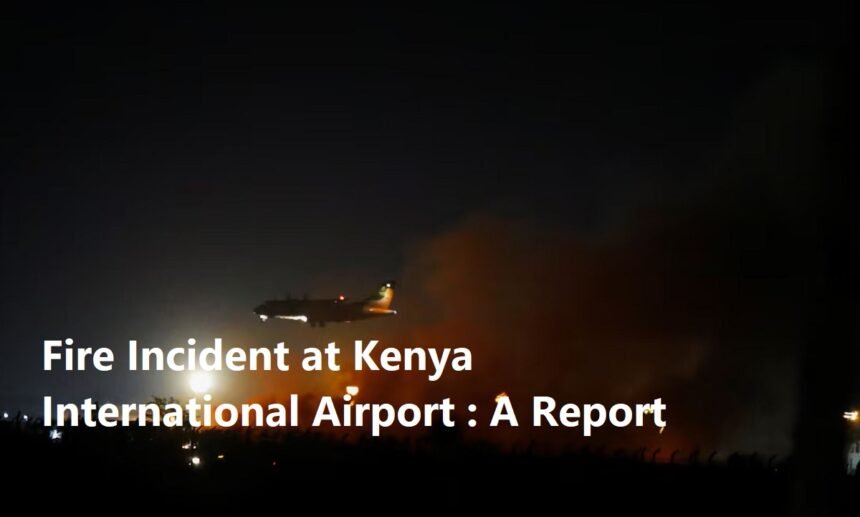On Friday, February 21, 2025, a significant fire erupted at Kenya International Airport, causing widespread disruption and drawing immediate attention from emergency services and the international community. This incident has raised concerns regarding safety protocols in one of Africa’s busiest aviation hubs.
The fire reportedly began in the early afternoon hours in a cargo area designated for handling freight shipments. Eyewitness accounts indicate that the flames quickly spread, fueled by highly combustible materials stored in the vicinity. Smoke billowed into the sky, creating an ominous cloud that could be seen from miles away. Passengers, airport staff, and nearby residents were startled by the rapid escalation of the fire, leading to an immediate evacuation order for those in the affected vicinity.
Emergency response teams, including firefighters and medical personnel, were swiftly mobilized to the scene. The Kenyan Airport Authority collaborated closely with local fire departments to combat the blaze. Despite their valiant efforts, the inferno raged for several hours before being brought under control. Authorities and media outlets reported that the fire resulted in significant damage to the cargo facility and surrounding infrastructure.
Fortunately, preliminary reports suggest that there were no fatalities or severe injuries related to the incident. However, several individuals suffered minor smoke inhalation and were promptly treated on-site. The rapid response of emergency personnel played a crucial role in mitigating potential casualties. Investigators have commenced an inquiry into the cause of the fire, although initial speculations point to a potential electrical fault or negligence related to the storage of hazardous materials.
The impact of the fire on airport operations has been profound. Flights were temporarily grounded, and passengers faced delays and cancellations, which resulted in considerable inconvenience. The international travel community observed the incident closely, as Kenya International Airport serves as a vital nexus for both passenger and cargo flights in the region. The disruption also raised questions about the adequacy of safety measures in place, particularly in terms of fire prevention and emergency preparedness.
In light of this incident, industry experts have called for a comprehensive review of airport safety protocols. They emphasize the necessity of stringent regulations regarding the storage of dangerous goods and the importance of conducting regular fire drills and safety training for airport staff. Ensuring that first responders are adequately trained and equipped to deal with emergencies of this nature is imperative for safeguarding lives and property.
As investigations continue, airport authorities have vowed to implement necessary changes to enhance safety and prevent future occurrences. The incident at Kenya International Airport serves as a sobering reminder of the inherent risks associated with air transport logistics and the continual need for vigilance in ensuring the safety of both passengers and staff.
In conclusion, the fire that broke out at Kenya International Airport on February 21, 2025, reflects a critical incident that necessitates immediate action and long-term strategic planning. With heightened scrutiny on safety measures and a renewed commitment to improving emergency preparedness, there is hope that lessons learned from this event will foster a safer environment within one of Africa’s most vital aviation hubs. The resilience of the emergency response teams and the ongoing investigations are crucial steps toward restoring trust and ensuring that such an incident does not recur in the future.












